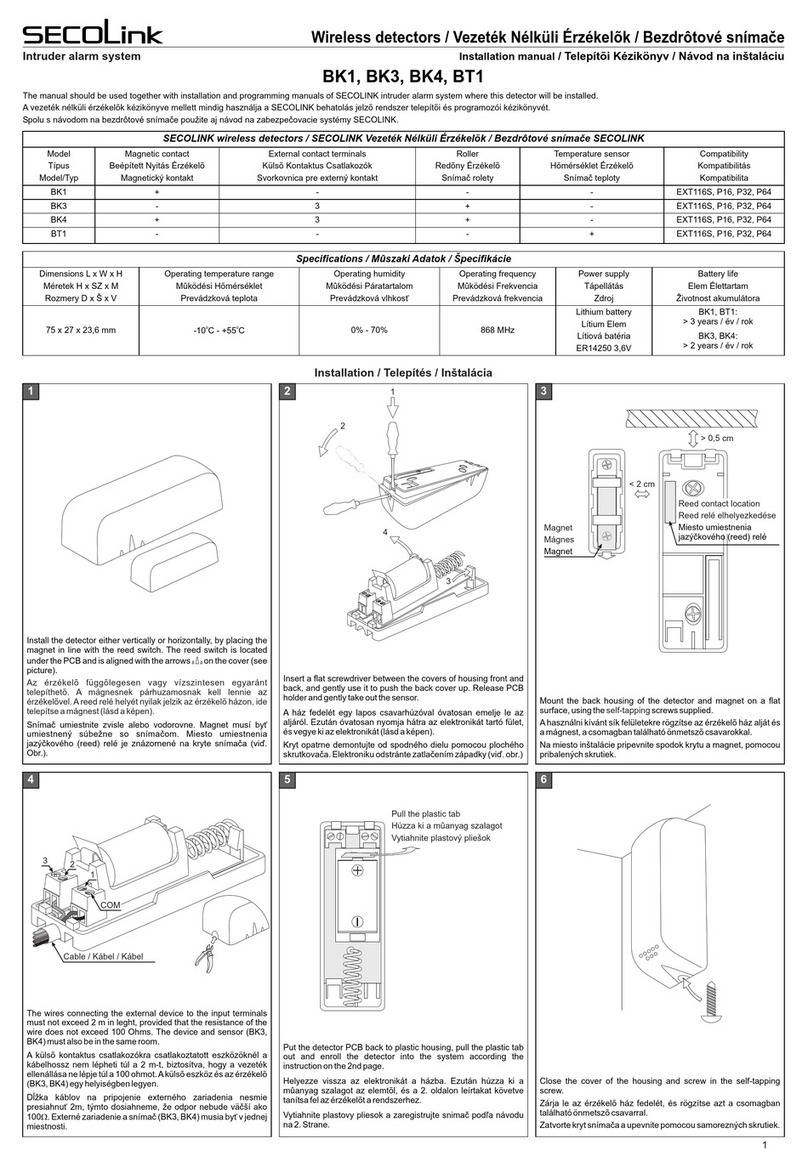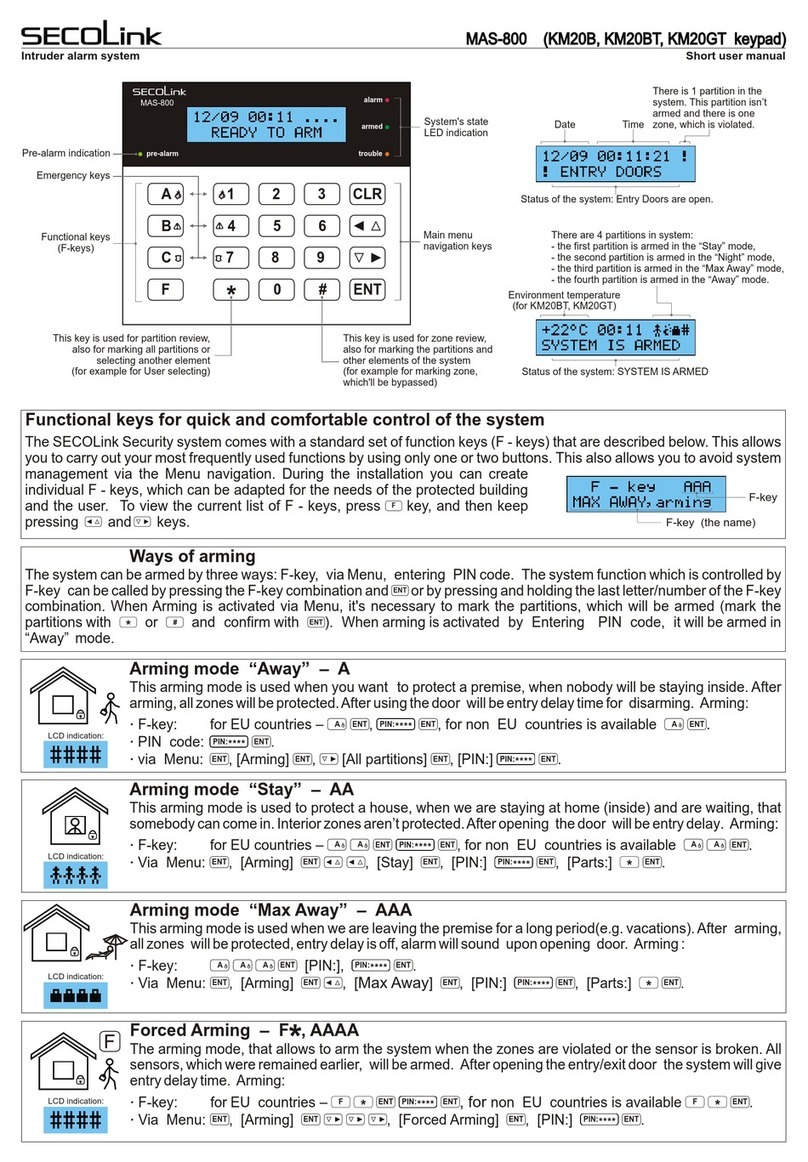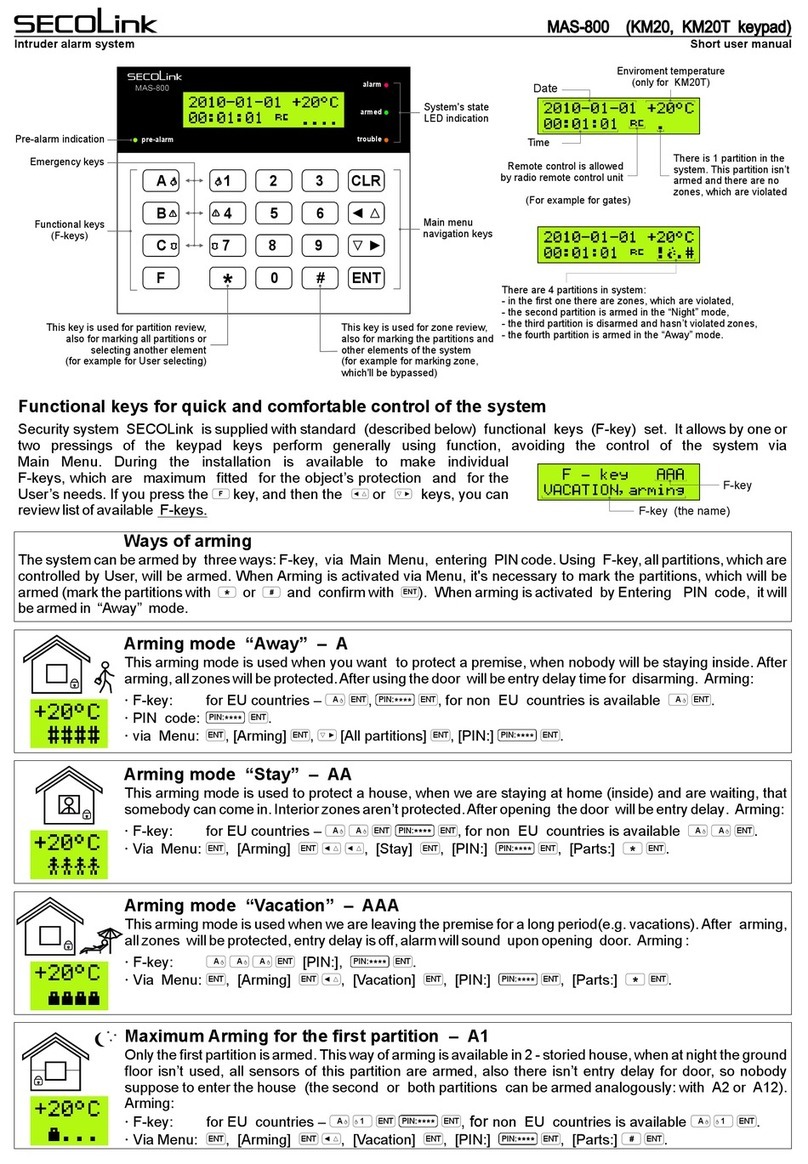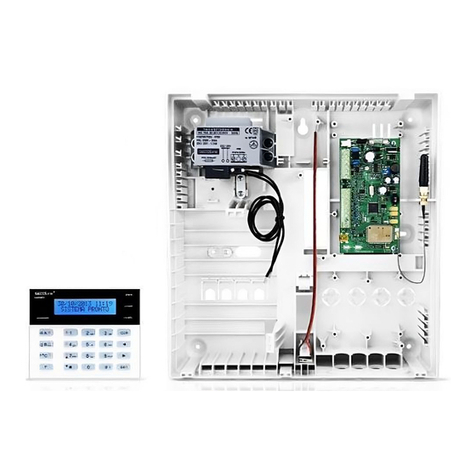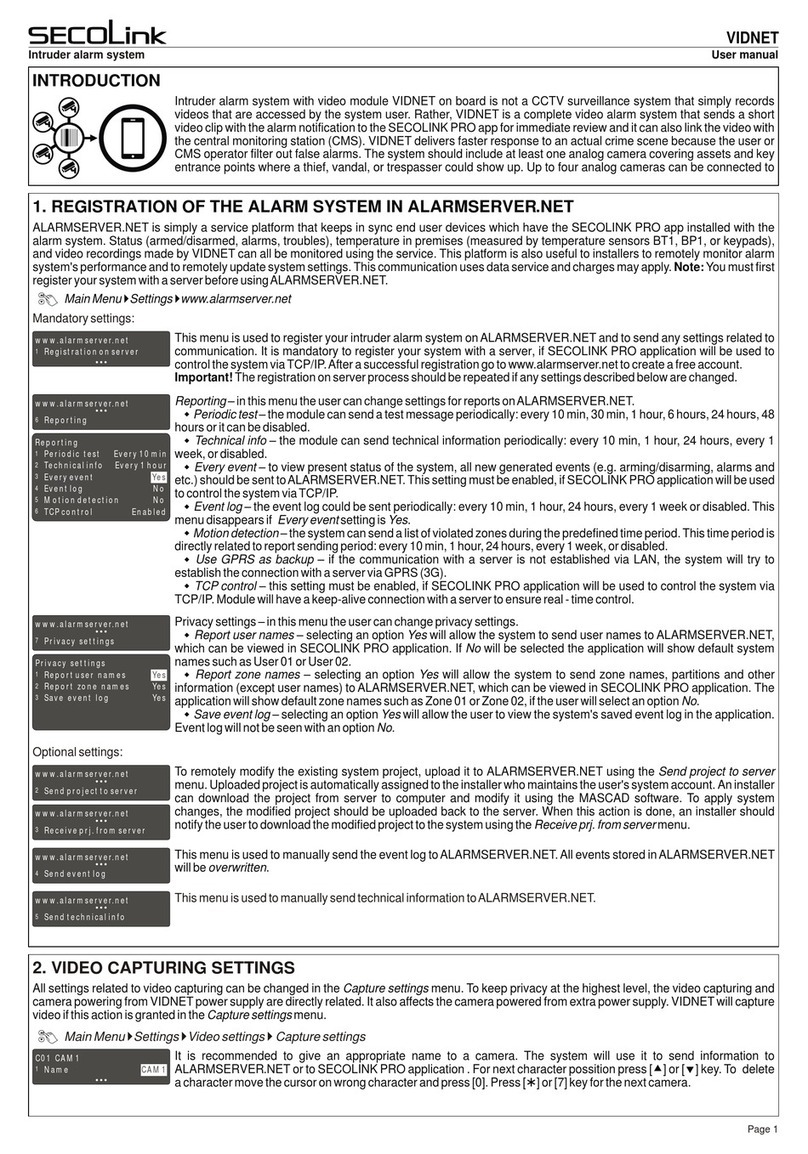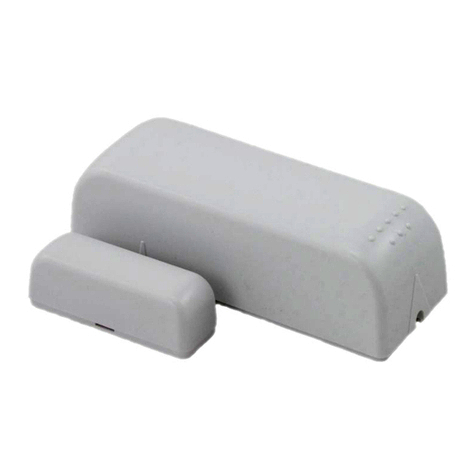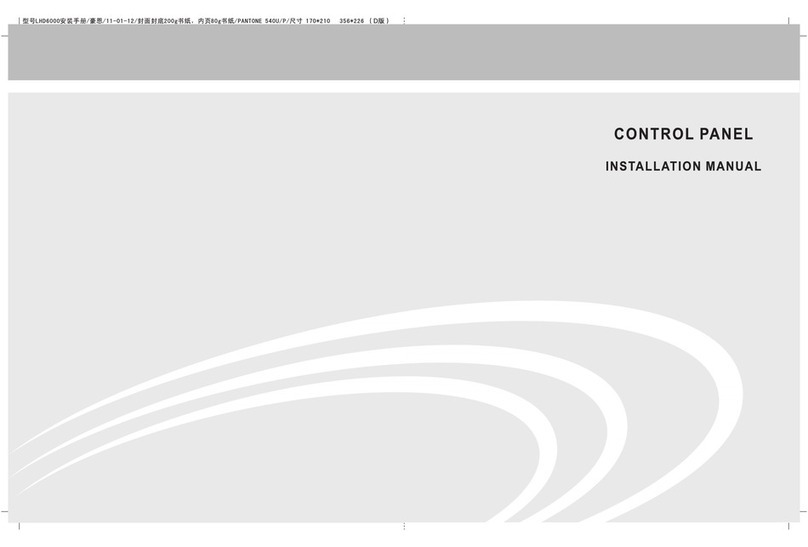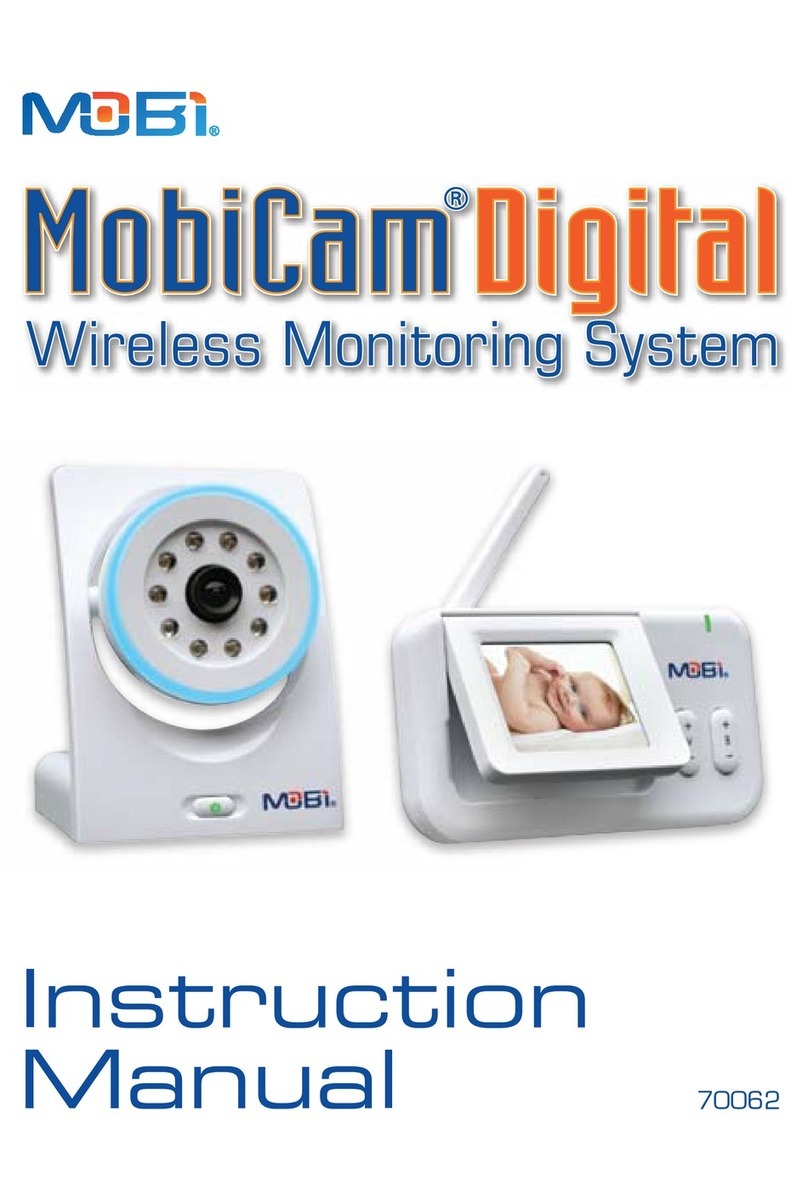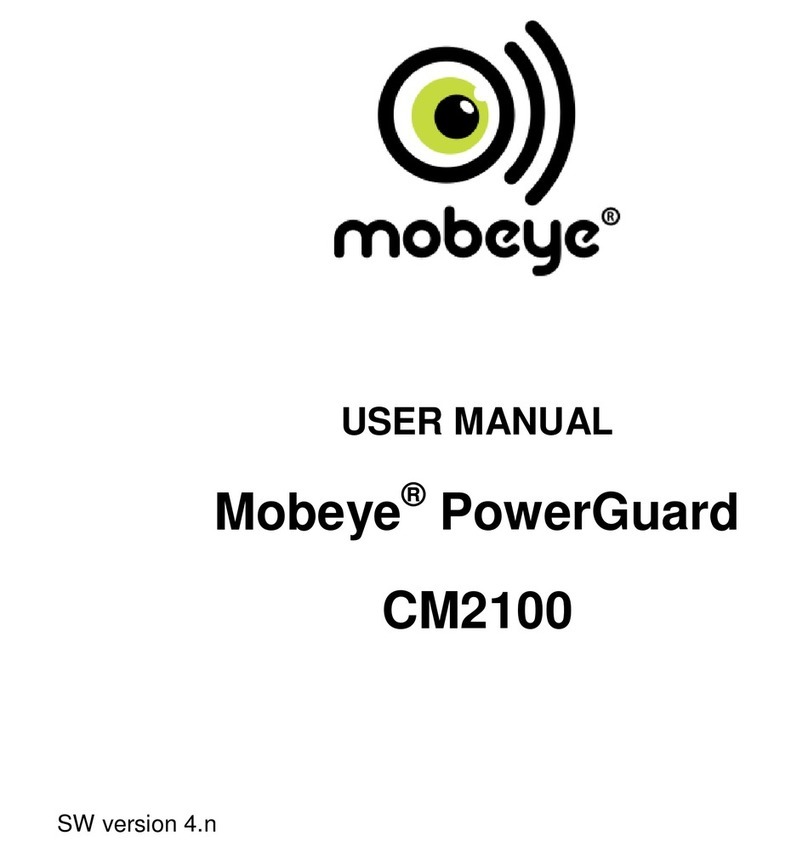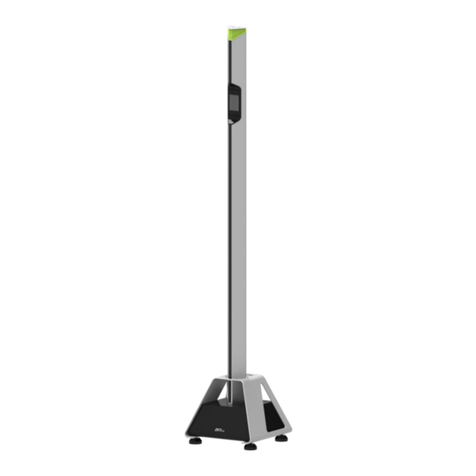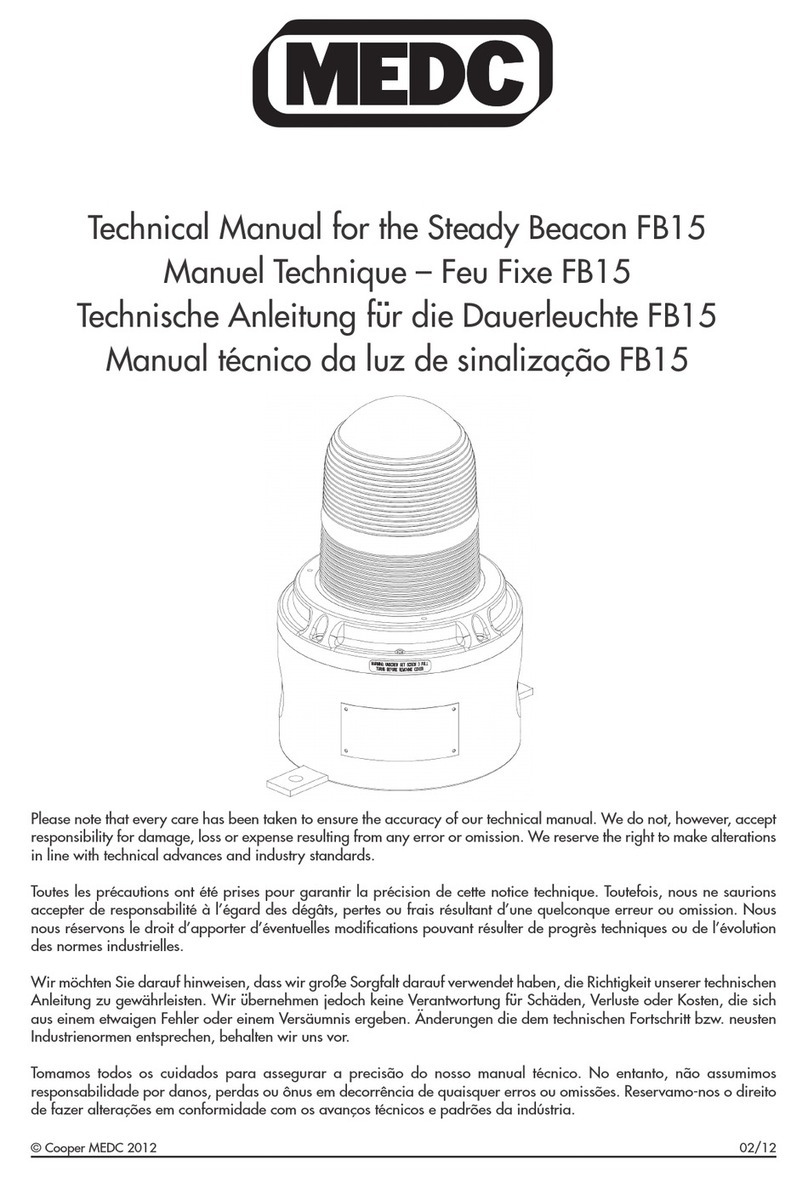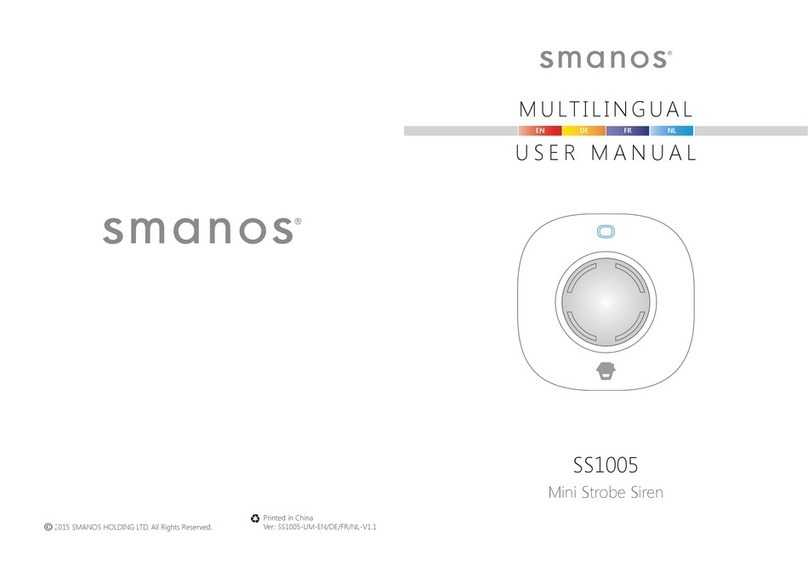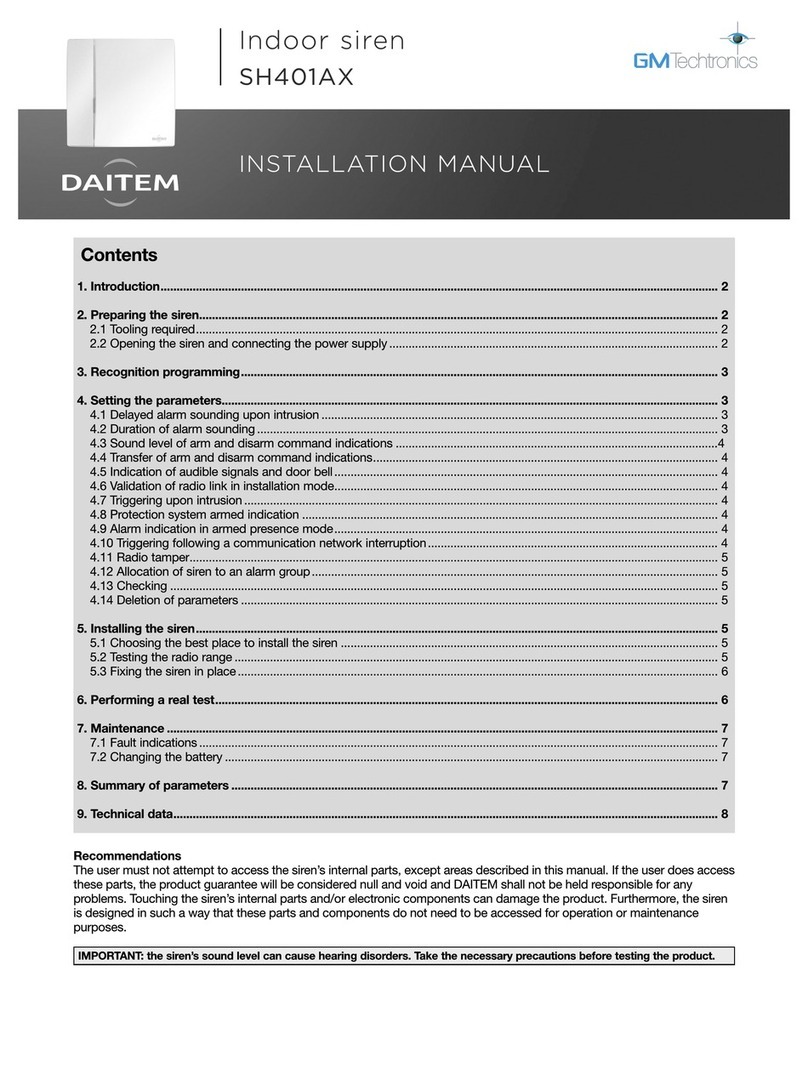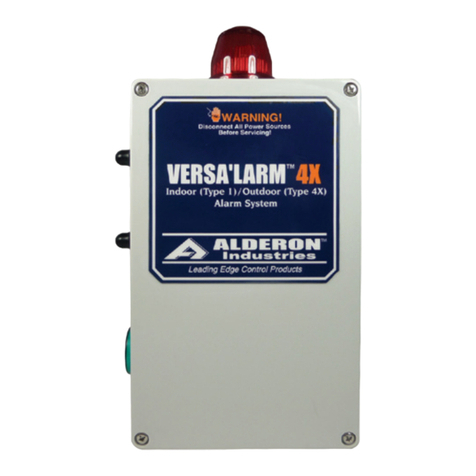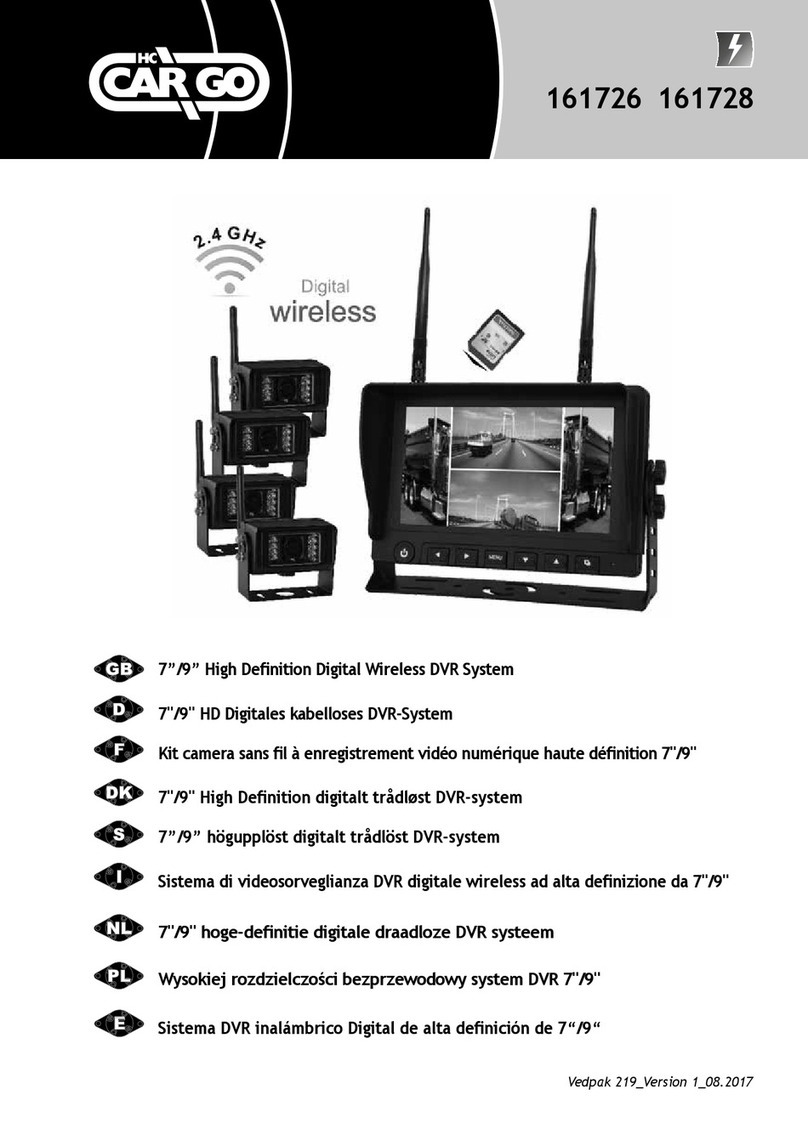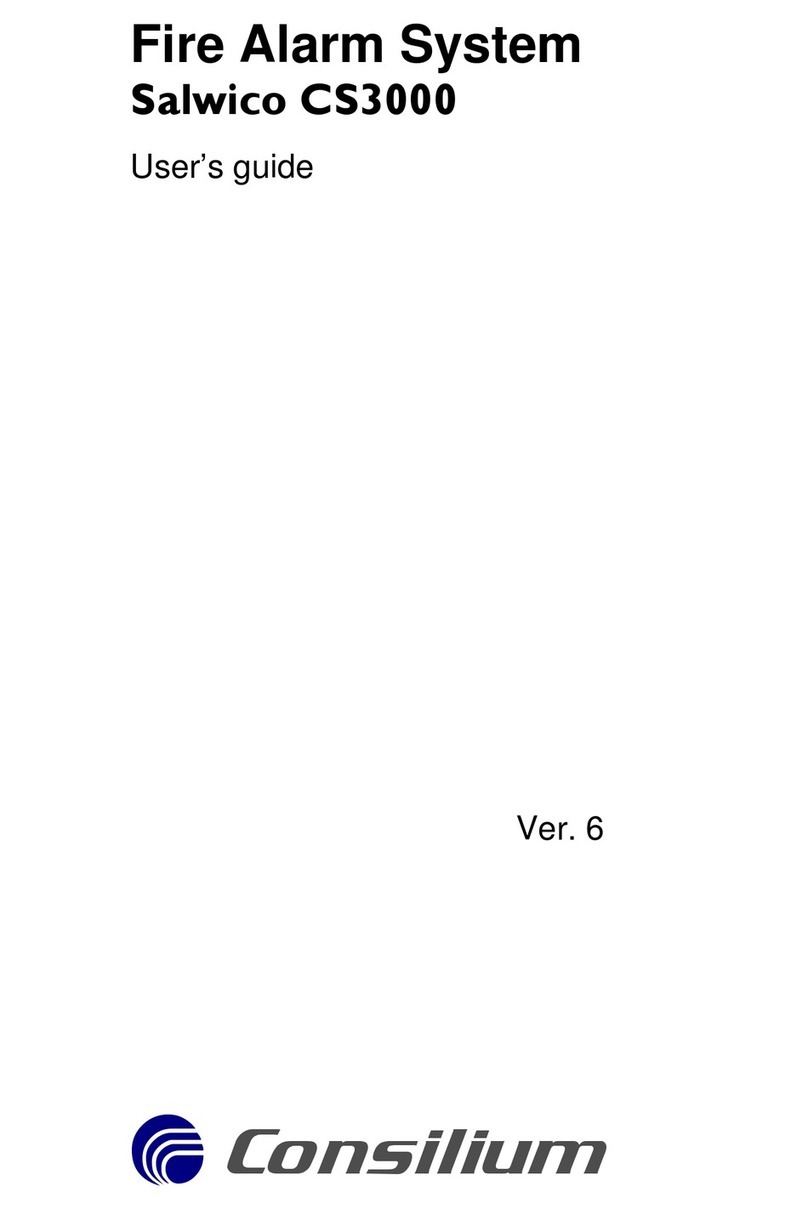
Short programming manual - basic information
Intruder alarm system
System with KM20B, KM20BT keypads
Short programming manual - basic information
Intruder alarm system
System with KM20B, KM20BT keypads
SYSTEM PROGRAMMING BY KEYPAD (continued)
O01 Attributes
-ArmFailNotif
PGM attributes are specific
options that help determine
how each definition functions,
and they must be manually set
as soon as the PGM is
defined.
PGM output activates if a
failure to arm is present due
trouble or zone violation (5
pulses).
PGM output activates if a
Pre-alarm alarm occurs.
PGM output will latch until a
valid user code is entered or is
cleared from menu (depends
on definition ).
To help the user separate
burglary alarm (steady) from
fire alarm (pulsating) this
attribute must be assigned to
the PGM output (PGM output
generates 1Hz pulses).
This attribute is used to invert
the normal state of the output.
Arming Failure Notification
Pre-alarm
Latch
Pulse
Inversion of Status
When Pre-alarm zone is
violated, system will make an
alarm without reporting to
CMS or to user.
Yes = zone will trigger
Pre-alarm.
No = zone will not trigger.
Z01 Pre-alarm
Yes
By setting PGM definition
installer will describe what
kind of alarm system activity
will be related with the PGM.
Unused PGM output should
be programmed as Not Used.
PGM output activates
when system is armed and the
selected zone or the module
tamper condition are present.
PGM output activates
when system is armed and the
selected zone or the module
tamper condition are present.
if the
selected type alarm occurs on
the selected partition. A l a r m
types: fire, burglary, tamper,
silent panic, audible panic,
technical and medical alarms.
if the
selected zone is violated
(when system is disarmed).
if the
selected zone is violated.
Additional feature for this
PGM definition: if pulse length
is 0 seconds then PGM will be
switched On (Off) any of
the selected zones were
violated.
PGM output activates when
zone is bypassed, and
deactivates when the zone is
reinstated.
PGM output activates if any
selected trouble is present.
Not used
Fire Alarm
Fire/Burglary Alarm
Burglary Alarm
Tamper Alarm
Technical Alarm
Selected Alarms**
Chime
Zone Violation
Bypass Status
System Trouble**
PGM output activates if a fire
alarm occurs on the selected
fire zone or when module fire
emergency keys are pressed.
PGM output activates if a
fire/burglary alarm occurs on
the selected fire/burglary zone
or when module fire, panic
emergency keys are pressed.
Note:
PGM output activates if a
burglary alarm occurs on the
selected burglary zone or
when module panic emer-
gency keys are pressed.
Note:
PGM output activates if a
tamper alarm occurs on the
selected zone or module.
PGM output activates if a
technical alarm occurs on the
selected zone or module.
PGM output activates
PGM output activates
PGM output activates
until
O01 Definition
Burglary Alarm
It is recommended to give a
reasonable name to the PGM.
PGM OUTPUTS (4th step)
O01 Name
Siren +PWR
Service Mode:
System Setup
System Setup:
PGM Outputs
O01 Address
00_1
PGM address is a 3-digit
number MA_P (“00_1”) where
MA (“00”) specifies a module
address and P (“1”) specifies a
PGM terminal on module
PCB. To program PGM it’s
necessary to enter the correct
PGM address.
Used for Entry/Exit zone only
to allow user to enter PIN for
system disarming. Entry
Delay time is programmable
within 1 - 255 seconds range.
The violation of zone with
Follower definition or zone
with Interior definition and In
Entry Route attribute will not
trigger alarm during Entry
delay.
Z01 Entry Delay
20 seconds
Page 7
This attribute used only for
Entry/Exit zone. With this
attribute being set system
stops Exit Delay time and arm
immediately when exit door is
closed.
Zone violation does not
make an alarm, but can start
PGM action (for zone with
definition 24h High
temperature or 24h Low
temperature only).
Allows to bypass zone.
Press key to set attribute.
“+” = attribute is set.
“-” = attribute is not set.
Arm On Exit
Without Alarm
Bypass Enabled
#!
#!
#!
#!
#!
#!
Exit /Entry Delay Warning
Exit Delay/Arm Status
Full Arm Status
Notifications**
Power Supply
Resettable Power Supply
Fire Power Supply
Timer
Mono/Bi Switch
PGM output activates if an
entry/exit delay is running in
the selected partition.
PGM output activates in an
exit delay is running or the
selected partition is being
armed.
PGM output activates if all of
the selected partitions are
armed.
PGM output activates if the
selected partition being armed
(1 pulse), being disarmed (2
pulses).
In case of unsuccessful
arming the PGM output
activates for 5 pulses.
After alarm clearing this type
PGM output can be switched
On (Off) for an appropriate
time.
PGM output can be used as
a power supply for an external
devices.
PGM output can be used as
a power supply for an external
devices.
It can be switched Off for
appropriate time period from
the keypad.
PGM output can be used as
power supply for fire or smoke
detectors.
When the system requires a
reset for these detectors the
output will be switched Off for
an appropriate time.
This output will be switched
Off each time after system
arming, alarm clearing. This
output can be switched Off
from menu also.
Only one this type PGM
output is available for control
panels PAS808, PAS808M
and PAS816.
PGM output activates when
a selected timer activates and
deactivates when selected
timer deactivates.
Output activates for preset
time duration from a zone
violation or from the keypad. If
the time is preset to the
0 seconds, the output is active
until the next signal from the
zone or from the keypad
appears.
O01 PulseLength
5 minutes
Pulse length determines how
long PGM will be switched
On/Off. The range within 1
sec. and 255 min.
O01 TrigSource1
+Zones 01
O01 TrigSource2
+Modules 01
From which system element
(zones, partitions, timers,
modules, alarms and trouble
types) PGM will be triggered
depends on PGM triggering
sources 1, 2.
After adding new elements in
to the system, these elements
should be assigned to
corresponding PGM sources.
REPORTING SETTINGS
(5th step)
The following section
explains all options that must
be programmed in order to
properly report system
eventsto a Central Monitoring
Station(CMS).
Contact ID reporting protocol
is used by default. Additional
reporting protocol Ademco
4x2 slow is available for
control panel PAS832 only.
Service Mode:
Report Setting









